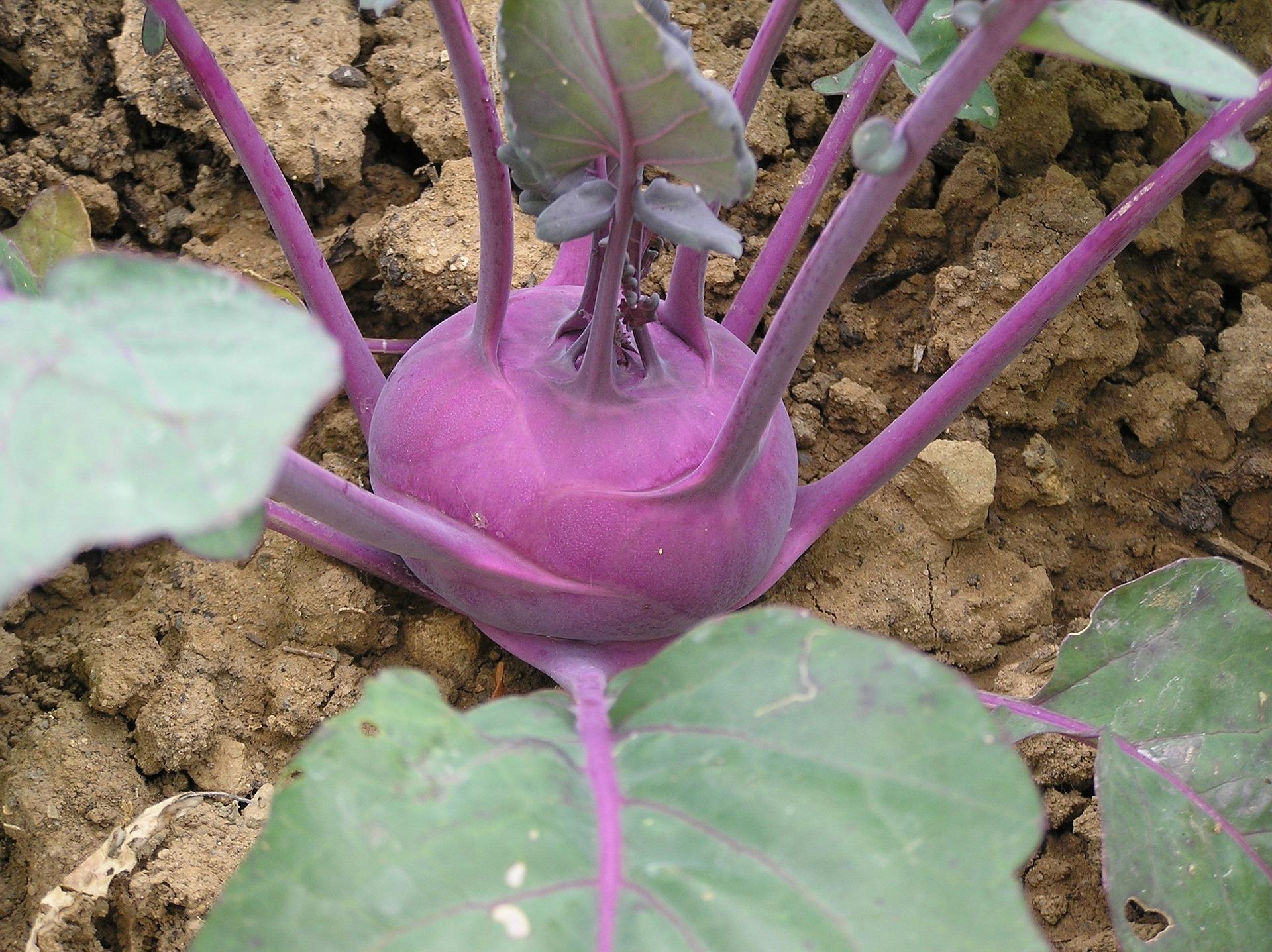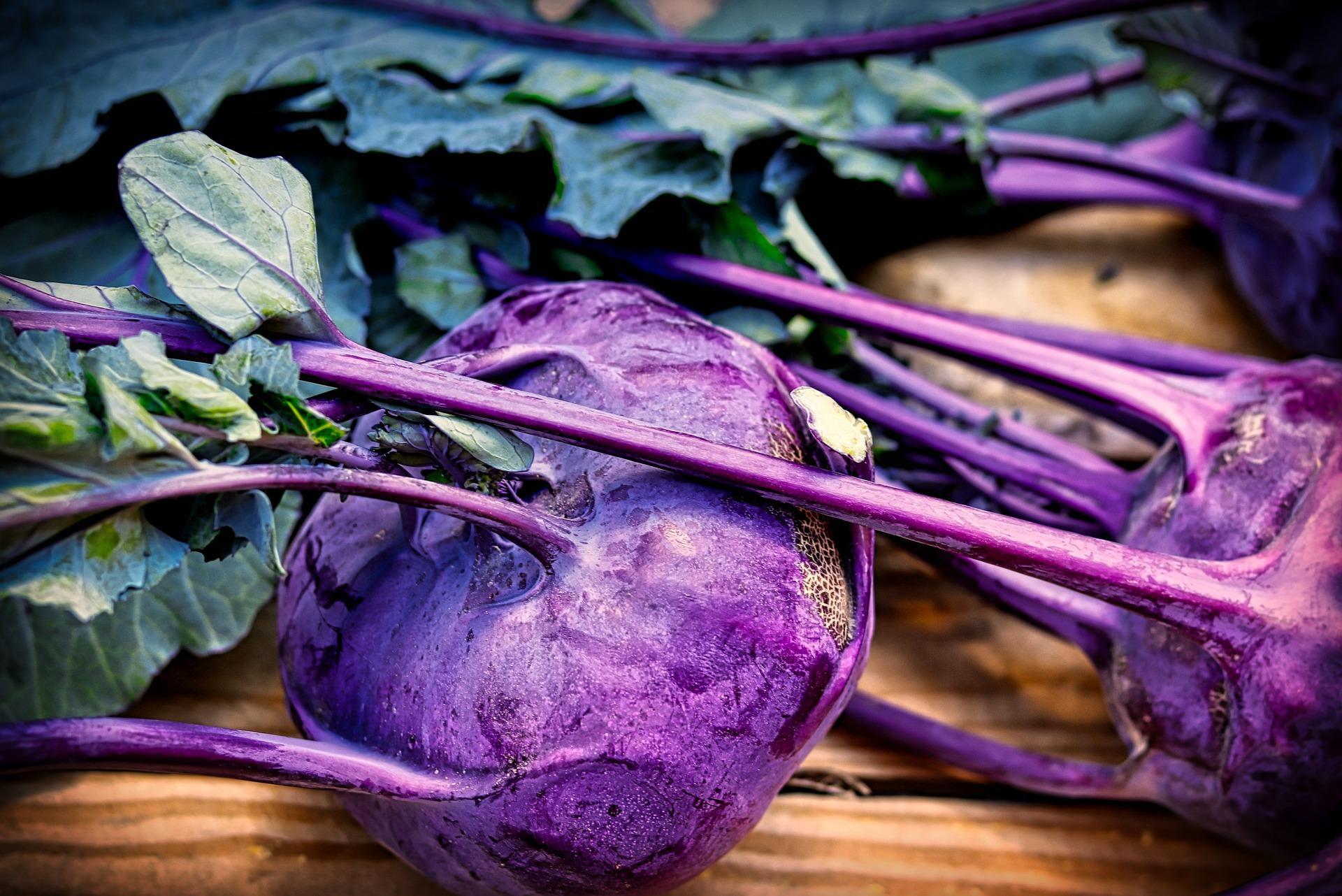

Kohlrabi is a tasty brassica that is easy to grow despite it not being widely available in the UK. It can thrive in poor soil and has a flavour, similar to a combination of cabbage and turnip. The skin gives this vegetable a nutty taste and come in purple, white and green varieties.
Kohlrabi can be sown directly in late April until mid-August. Sow the Kohlrabi seeds approximately 1cm deep and in rows, approximately 30cm apart. Kohlrabi can cope with dry conditions and do not like water-logged soil. This is an ideal vegetable to grow in a raised bed if you prefer.
Thin out the seedlings, they can be replanted, spaced apart by approximately 6 inches.
Kohlrabi can be prone to pests and diseases as do other brassicas, such as cabbage fly or club root but are slightly more resistant. Depending on the variety and sowing time, they should be ready for harvesting after 2-3 months.
When the bulb stem is swollen to approximately golf ball to cricket ball size, it is ready for harvesting. If it is allowed to grow any bigger, it will become woody and tough to cook. You can lift them, cut off the roots and leaves, and the leaves can be treated like spinach or greens and enjoyed too.
Wash the bulb but do not peel for the nutty goodness of the skin. Kohlrabi can be eaten raw or cooked.

